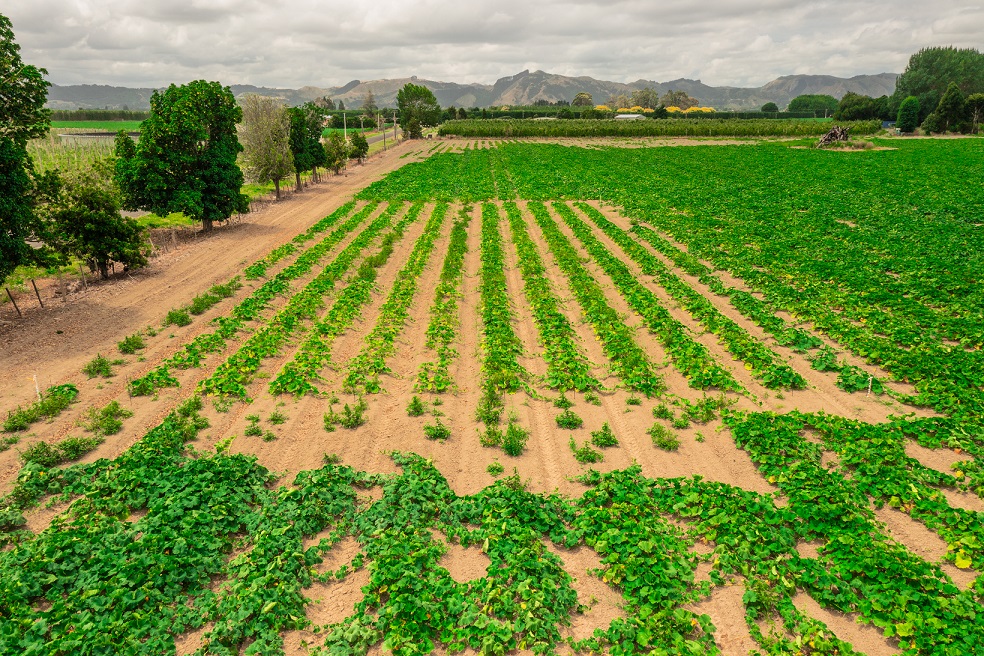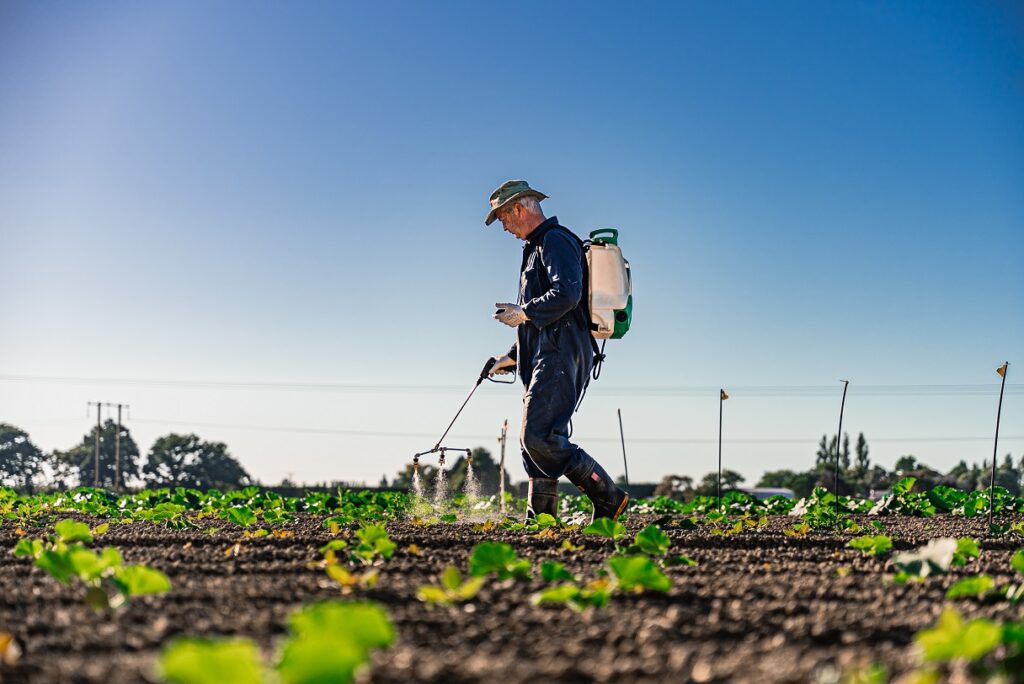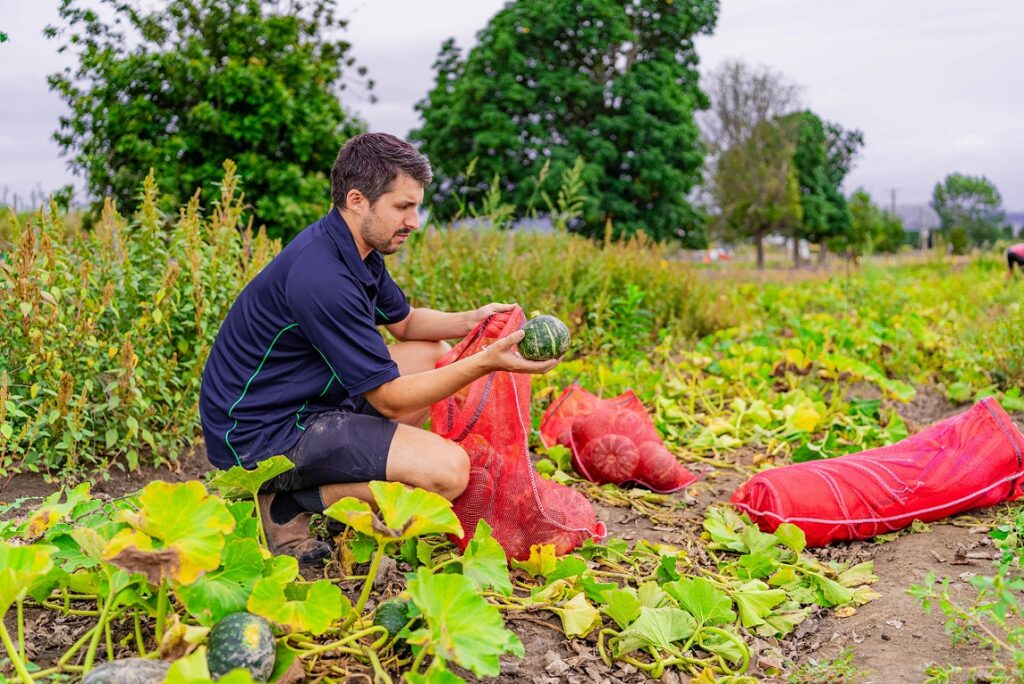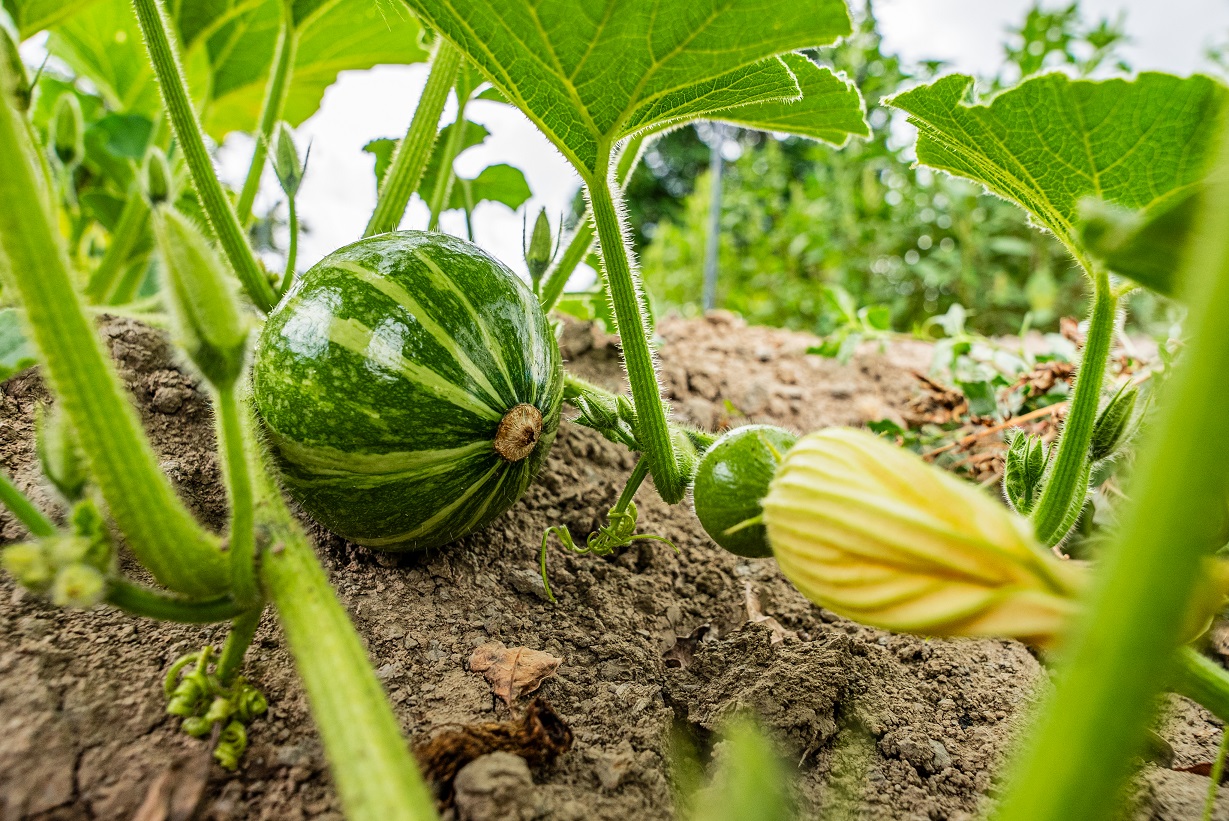A survey of squash growers shows some are already using agroecological crop protection practices, and are willing to adopt more if they have a positive impact on soilborne diseases and their farming operation.
The grower survey was conducted during the winter as part of the A Lighter Touch-New Zealand Buttercup Squash Council project aiming to develop an agroecological “whole of farm” approach to manage soilborne disease (SBD) in buttercup squash. The diseases cost growers an average of $20 million a year in lost revenue.
Agronomist and project technical lead Dereck Ferguson conducted the survey of Hawkes Bay and Gisborne growers, which was designed to provide an overview of current grower management practice in terms of SBD in squash. It also gathered baseline knowledge of agroecological practices, and an understanding of barriers to their uptake.
In addition, a number of growers were involved in workshops discussing the practical application of findings from a knowledge review looking at what growing practices are required with buttercup squash to mitigate or break the SBD cycle. This review will feed into the development of a toolkit for growers. Demonstration sites in Hawkes Bay and Gisborne this summer will grow squash using insights from trials, the knowledge review and grower workshop.

The survey of Hawkes Bay and Gisborne growers provides an overview of current grower management practice in terms of soilborne diseases in squash crops like this Gisborne site.
Dereck says the growers interviewed for the survey were very representative of the industry, and ranged from family farms to corporate, large-scale operations. Collectively, they were growing squash on thousands of hectares of both leasehold and owned land. They ranged from growers with very diverse rotations involving as many as 15 crops, through to others growing a smaller number of crops but on a bigger scale.
Growers were asked to rank their knowledge of agroecology, the desirability of such an approach, and whether they already knew about or implemented integrated pest management (IPM).
“Some growers were not familiar with the term agroecology, but showed through their answers they were already practicing aspects of it,” Dereck says. Most had tried to incorporate some agroecological practices, including planting of natives to encourage beneficial insects or use of service crops for soil fumigation. They considered agroecology desirable.
In terms of barriers to adopting agroecological practices and products, cost and uncertainty around the cost:benefit ratio were the main factors listed by growers, with a desire to see successful trials and scaleability of agroecological practices.
Large scale growers had the advantage of dedicated agronomy expertise in-house to research new practices, if they chose to. However, the growers’ attitudes towards adoption of agroecological practices and products was more a reflection of each individual’s mindset and perspective, than the size of their operation.
Growers were interested to hear what had been learnt so far, both from the review of New Zealand and overseas knowledge on the prevalence, management and mitigation of SBD in squash and related cucurbit crops, and from trials conducted last season using biological products.
Three areas were of particular interest to growers, being the demonstration site protocol and the treatments involved, the use of vetch as a service crop, and the possibility of using soil testing to understand pathogen loadings of SBD.
“These were components growers see they could potentially implement relatively easily and have a positive effect,” Dereck says.
In determining the protocol for the demonstration trials this growing season, the project team is drawing on the findings of the review and trials conducted within the squash project and other related ALT projects. Numerous conversations have taken place with suppliers to understand the products in more detail and how they fit in a crop protection programme.

Products previously trialled within the squash project and other related ALT projects will be part of demonstration trials this growing season.
“It’s about understanding how you would layer a programme right from pre-planting all the way through to close to harvest with biological controls, biostimulants and foliar products. The growers were really interested in what that would look like, and whether it is compatible with their current spray programme and systems.”
A squash grower would have a sprayer passing over the paddock several times throughout its life, whether it was applying a herbicide earlier in the season, or a fungicide later in the crop cycle for powdery mildew. “Each of these applications, which the grower is already doing, provides an opportunity to add a biological product. It’s a case of working out, when do you do it to get maximum effect.”
The knowledge review, which was led by Lincoln University, identified benefits in the use of vetch as a service crop in reducing SBD incidence.
“There are lots of trials they looked at, some of them pot trials in glasshouses and some were field trials, which showed the expression of SBD, particularly caused by Fusarium species, was reduced in the squash or other cucurbit crops grown in a paddock following a service crop of vetch.”
Dereck says the mode of action – how vetch controls or suppresses Fusarium spores in the soil – was not known, and would make an interesting focus of study for a researcher.
“What we want to learn for the best management guide is how to most effectively manage the vetch crop. If you plant in autumn, following your squash or summer crop, and grow it through the winter, how do you terminate it? Is it best to graze it with lambs, simply plough it in, mulch it before cultivating, or just spray it off.”
Dereck expects some of this knowledge will be gathered organically over time, as growers incorporate vetch into their management practices. The demonstration sites will also showcase vetch in future.
“One grower is already using it as a component of a mix that he grazes for winter with lambs, and others are interested in trying it. Growers will do it different ways, and they’re pretty smart. Combined with knowledge from the project, in two or three years they’ll have worked out how to manage it.”
Soil testing to determine how much SBD is present is an area the project team has been working through. The initial concept was to test soil for the presence of particular strains of SBDs which affect squash and other cucurbits.
However, further work with a plant pathology laboratory revealed that within a particular strain of a SBD, such as Fusarium oxysporum, there were as many as 100 or more sub-strains, only some of which negatively affected squash and other cucurbits.
“It looks like a couple of these sub-strains are specific to squash or cucurbits, while others will be specific to other crops, or even weeds, in terms of having an effect. And not all F. oxysporum is harmful, so you really need to know the sub-strains present in the soil for the testing to be useful.
“Unfortunately, at this point in time, the level of soil testing available is not detailed enough to distinguish between all the sub-strains. But it’s still interesting information to the project team, and to growers – it could be the way of the future if the scientists can work out a way to test down to the level required. It’s not something we should let go of.”

Squash being harvested from the 2023/24 growing season project trial.
A Lighter Touch Technical Lead for agroecology projects Jeff Smith acknowledges the breadth and complexity of soilborne disease as a crop protection topic even within the confines of a single crop like buttercup squash.
“That said, the ALT programme is the perfect opportunity for the New Zealand Buttercup Squash Council (NZBSC) to embark on addressing what is such a high cost issue to their industry.”
Not only can NZBSC leverage the Sustainable Food and Fibre Futures funding opportunity through the Ministry for Primary Industries’ co-funding of ALT, but the collective approach of working with rotation crop partners and others grappling with soilborne diseases has opened collaborative opportunities less obvious outside of the ALT programme.
“As Dereck has intimated, there is still much to learn and although this project cannot provide all the answers, it has already identified control opportunities and will continue to help prioritise and focus research as well as the agronomic practice change required in an integrated approach to crop protection,” Jeff says.
